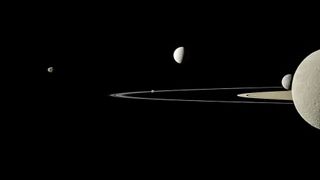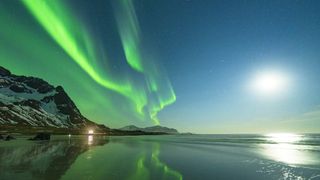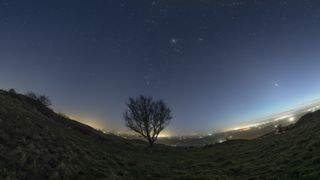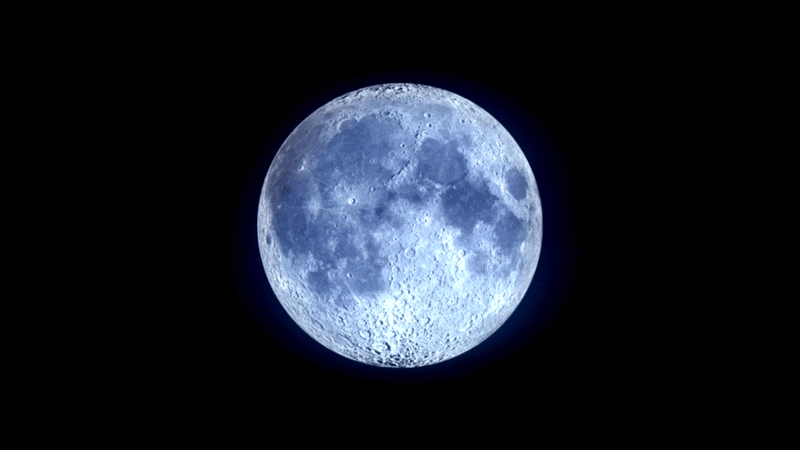Daisy Dobrijevic joined Space.com in February 2022 having previously worked for our sister publication All About Space magazine as a staff writer. Before joining us, Daisy completed an editorial internship with the BBC Sky at Night Magazine and worked at the National Space Centre in Leicester, U.K., where she enjoyed communicating space science to the public. In 2021, Daisy completed a PhD in plant physiology and also holds a Master's in Environmental Science, she is currently based in Nottingham, U.K. Daisy is passionate about all things space, with a penchant for solar activity and space weather. She has a strong interest in astrotourism and loves nothing more than a good northern lights chase!
Latest articles by Daisy Dobrijevic

What are lunar eclipses and how do they occur?
By Daisy Dobrijevic last updated
Reference Lunar eclipses occur when Earth blocks the sun and casts a shadow over the surface of the moon. We explore the different types of lunar eclipses here.

Total lunar eclipse March 2025: Best photos of the "Blood Worm Moon"
By Daisy Dobrijevic published
Relive the 2025 "Blood Worm Moon" total lunar eclipse with these breathtaking photos.

Saturn's moons: Facts about the weird and wonderful satellites of the ringed planet
By Daisy Dobrijevic last updated
Reference Saturn has the most moons of any other planet in the solar system. Here we explore some of the 274 moons that orbit the ringed planet.

A total lunar eclipse comes to North America tonight: Here's everything you need to know about the 'Blood Worm Moon'
By Daisy Dobrijevic published
The moon will put on quite the show tonight; we've got everything to make sure you don't miss all the total lunar eclipse action.

Total lunar eclipse March 2025 livestreams: Where to watch the 'Blood Moon' online for free tonight
By Daisy Dobrijevic last updated
Here's how to watch all the total lunar eclipse action unfold live and online so you don't miss a second of the dramatic "Blood Moon" on March 13.

What time is the 'Blood Moon' total lunar eclipse March 13?
By Daisy Dobrijevic published
A dramatic total lunar eclipse will turn the moon blood red for millions across North America overnight on March 13-14. Here are the best times to watch the show unfold.

Total lunar eclipse is just one week away: When and where to see the Blood Moon
By Daisy Dobrijevic published
One week until a total lunar eclipse on March 13 turns the moon blood red. Here's everything you need to know.

Aurora alert: Incoming solar storm could spark northern lights as far south as New York tonight
By Daisy Dobrijevic published
Aurora chasers are on high alert for possible geomagnetic storm conditions from March 4 to March 5. Northern lights possible at mid-latitudes.

Why March is the best month to see the northern lights
By Daisy Dobrijevic last updated
According to scientists, March is the best month to see auroras due to heightened geomagnetic activity. We explore why this is the case and what we can expect this month.

Earth shines over the moon in amazing 1st photos from private Blue Ghost lander. 'We're all in that picture.'
By Daisy Dobrijevic published
Blue Ghost aced its lunar landing and is already sharing its first stunning views from the moon.

Partial solar eclipse 1 month away: The moon will take a 'bite' out of the sun on March 29
By Daisy Dobrijevic published
Don't miss the partial solar eclipse on March 29! Find out where and when to see it, and how to prepare with just one month to go!

Northern lights webcams: Watch the aurora borealis online for free
By Daisy Dobrijevic last updated
Reference We have rounded up some of the best aurora webcam views so you can enjoy the wonder of the northern lights from the comfort of your own home.

Astrophotographer captures 'rare' planetary parade as 7 planets align in the night sky (photo)
By Daisy Dobrijevic published
Seven worlds align under one sky in a breathtaking photograph captured by astrophotographer Josh Dury.

Black holes: Everything you need to know
By Nola Taylor Tillman, Daisy Dobrijevic last updated
Reference Black holes are some of the most fascinating objects in the universe.

Total lunar eclipse brings a Blood Moon to North America next month. Here's how to see it
By Daisy Dobrijevic published
Earth will soon experience the first total lunar eclipse since November 2022.

Valentine's Day Aurora Alert: Geomagnetic storm could bring northern lights as far south as Michigan and Maine tonight and tomorrow
By Daisy Dobrijevic last updated
Strong solar winds could supercharge the northern lights just in time for Valentine's Day.

February's Full Snow Moon dazzles in a flurry of stunning photos from around the world
By Daisy Dobrijevic published
We've rounded up some of the best full moon photos below. So sit back, relax and enjoy the show.

February's full moon shines bright tonight. Here's what to expect from the Snow Moon
By Daisy Dobrijevic published
February's Full Snow Moon will rise just as the sun sets.

20 jaw-dropping places on Earth that look like an alien planet
By Daisy Dobrijevic published
Earth is home to some truly bizarre and breathtaking landscapes — here are 20 that look straight out of an alien world.

Aurora alert! Gigantic 500,000-mile 'hole' in the sun's atmosphere could spark impressive northern lights tonight and tomorrow (photo)
By Daisy Dobrijevic last updated
The gigantic coronal hole is blasting high-speed solar wind toward Earth, potentially igniting vibrant auroras and minor geomagnetic activity on Jan. 31. and Feb. 1.

What is the Big Bang Theory?
By Andrew May last updated
Reference The Big Bang Theory explains how the universe began.

Satellites watch world's largest iceberg on crash course with Antarctic penguin island (photo/video)
By Daisy Dobrijevic published
The mega-iceberg poses a significant threat to South Georgia Island a remote wildlife haven.

Aurora alert: Incoming solar storms could spark northern lights as far south as New York and Idaho tonight
By Daisy Dobrijevic last updated
Aurora chasers are on high alert for minor geomagnetic storm conditions from Jan. 24 through to Jan. 25. Northern lights might be visible over some northern and upper Midwest states.
Breaking space news, the latest updates on rocket launches, skywatching events and more!



